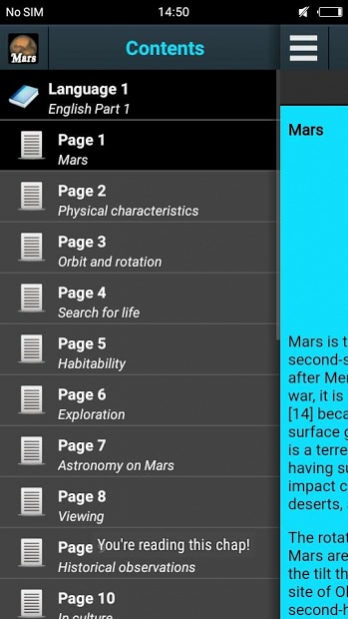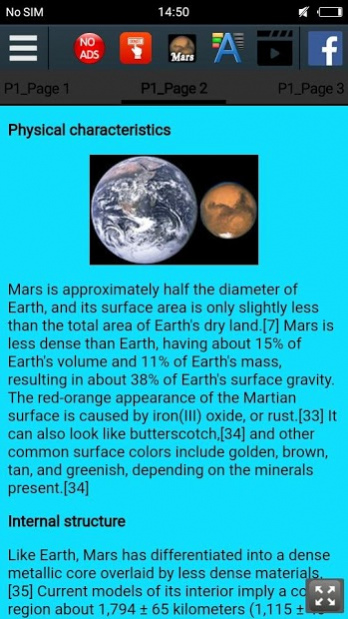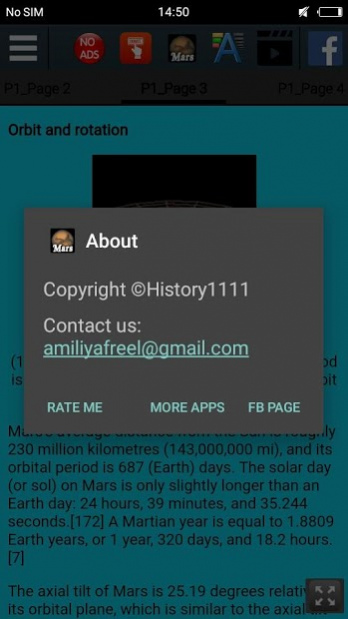Mars 1.2
Download
Free Version
Publisher Description
Mars is the fourth planet from the Sun and the second-smallest planet in the Solar System, after Mercury.Often referred to as the "Red Planet"[13][14] because the iron oxide prevalent on its surface gives it a reddish appearance.[15] Mars is a terrestrial planet with a thin atmosphere, having surface features reminiscent both of the impact craters of the Moon and the valleys, deserts, and polar ice caps of Earth.
The rotational period and seasonal cycles of Mars are likewise similar to those of Earth, as is the tilt that produces the seasons. Mars is the site of Olympus Mons, the largest volcano and second-highest known mountain in the Solar System, and of Valles Marineris, one of the largest canyons in the Solar System. The smooth Borealis basin in the northern hemisphere covers 40% of the planet and may be a giant impact feature.[16][17] Mars has two moons, Phobos and Deimos, which are small and irregularly shaped. These may be captured asteroids,[18][19] similar to 5261 Eureka, a Mars trojan.
Until the first successful Mars flyby in 1965 by Mariner 4, many speculated about the presence of liquid water on the planet's surface. This was based on observed periodic variations in light and dark patches, particularly in the polar latitudes, which appeared to be seas and continents; long, dark striations were interpreted by some as irrigation channels for liquid water. These straight line features were later explained as optical illusions, though geological evidence gathered by uncrewed missions suggests that Mars once had large-scale water coverage on its surface at some earlier stage of its existence.[20] In 2005, radar data revealed the presence of large quantities of water ice at the poles[21] and at mid-latitudes.[22][23] The Mars rover Spirit sampled chemical compounds containing water molecules in March 2007. The Phoenix lander directly sampled water ice in shallow Martian soil on July 31, 2008.[24] On September 28, 2015, NASA announced the presence of briny flowing salt water on the Martian surface.[25]
About Mars
Mars is a free app for Android published in the Reference Tools list of apps, part of Education.
The company that develops Mars is GeneralKnowledge. The latest version released by its developer is 1.2.
To install Mars on your Android device, just click the green Continue To App button above to start the installation process. The app is listed on our website since 2021-08-04 and was downloaded 2 times. We have already checked if the download link is safe, however for your own protection we recommend that you scan the downloaded app with your antivirus. Your antivirus may detect the Mars as malware as malware if the download link to com.infoappzbrew.mars is broken.
How to install Mars on your Android device:
- Click on the Continue To App button on our website. This will redirect you to Google Play.
- Once the Mars is shown in the Google Play listing of your Android device, you can start its download and installation. Tap on the Install button located below the search bar and to the right of the app icon.
- A pop-up window with the permissions required by Mars will be shown. Click on Accept to continue the process.
- Mars will be downloaded onto your device, displaying a progress. Once the download completes, the installation will start and you'll get a notification after the installation is finished.



